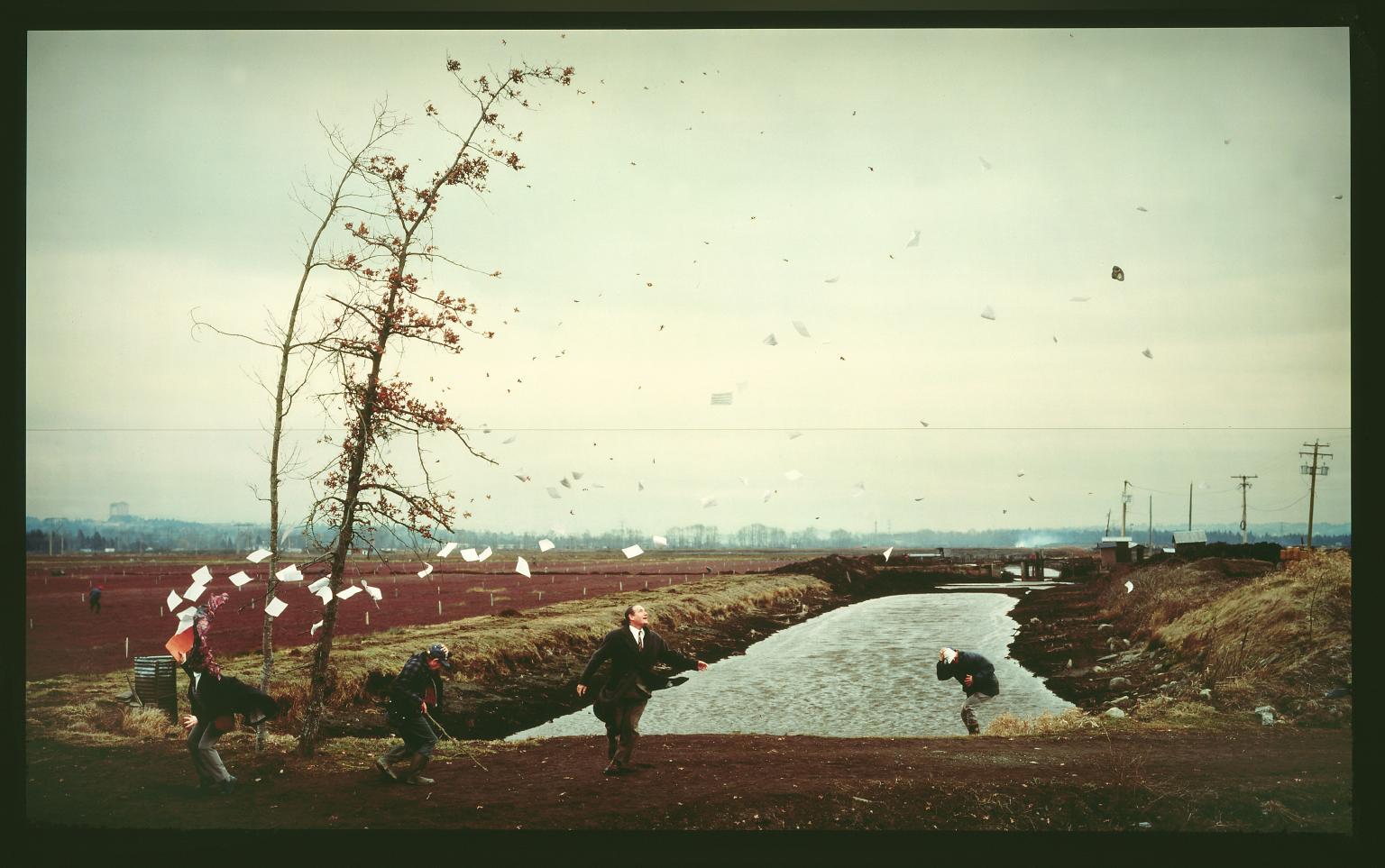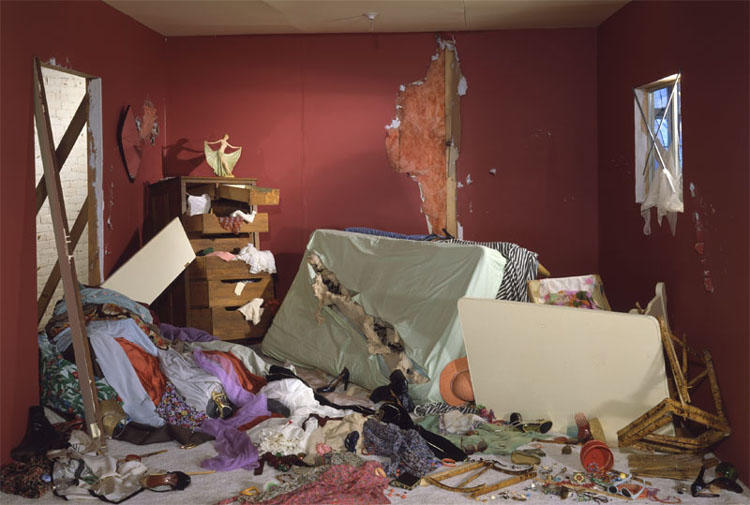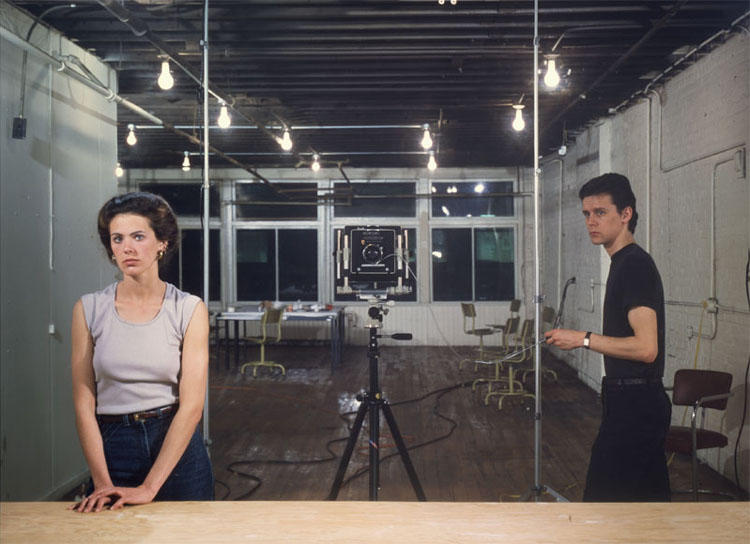Introduction
Contemporary art is a topic that attracts much attention nowadays. Those individuals who got used to canonic masterpieces tend to claim that this type of art does not bear any value. However, a lot of people including the representatives of the general public and professionals connected with this area believe contemporary art to be an outstanding sect that implies philosophical views and allows us to reveal simple ideas in an unordinary way. Today, people are affected by computer screens, televisions, and billboards so that they lose the opportunity to observe general cultural shininess depicted by artists’ imagery.
Still, they can benefit greatly if resort to some works of great masters who deliver critical messages to the audience through their works. Jeff Wall is one of these individuals. Focusing on these works, viewers can feel how their lives stop for a moment because of the depicted essence of slowness. The artist pays much attention to the subject matter of his works and carefully constructs pictures to enlarge social problems behind them. Even though the majority of his photos are made based on famous paintings, Wall does not simply imitate depicted images but reinterprets them, adding new ideas and attracting more attention to the things the public fails to emphasize. The artist is an exciting figure because he managed to combine the past and the present so that they turned into a harmonious mixture within rigorous formal compositions.
Jeff Wall’s Biography
Jeff Wall is a seventy-year-old Canadian artist who was rather active in the second half of the 20th century. From the very childhood, he wanted to become a painter, so he studied art history. However, at that time, Wall was attracted by Vancouver’s experimental art scene. As a result, he started practicing photography and soon realized that it allowed him to express his ideas better than any other artwork. He received his Master’s Degree at the University of British Columbia in 1970, did his postgraduate research, and got a teaching position four years later. Wall worked in several Universities at the same time, which allowed him to spread his views and enlarge his audience. By the 1970s, he has already had some group exhibitions in Washington and London, but his first personal show took place only eight years later at Nova Gallery, Vancouver. With time, he also had an opportunity to maintain solo exhibitions in such large cities as London, Helsinki, Chicago, and Paris. Wall toured in 1995-1996, which proves that a lot of people are interested in his works and recognize him as an outstanding artist who has his style that is different from others.
Wall is interested in the avant-garde and shares ideas of its representatives. He believes that artists need to experiment with their views on the tradition to support and develop it. While traveling, he observed different paintings that were created by great artists and were so moved by them that attempted to share his ideas regarding them with the help of photography. He came up to the conclusion that contemporary artists were not able to achieve the same success in painting as their predecessors that is why the best tool for them was photo and film. With their help, Wall represented everyday life and reinterpreted works created by other masters so that a lot of his artworks refer to an art, the media, and socio-economic problems.
A Sudden Gust of Wind
A lot of post-modern artists who practiced after the 1970s focused on contemporary ideas concerning the past because they considered that the understanding of some critical issues and concepts (such as violence, poverty, race, or class inequality) could be obtained while referencing other artworks. Wall, as their representative, managed to create a large light-box. This form mixes advertisement, cinema, and still photography and turned into an extraordinary work that impresses the audience. For example, the A Sudden Gust of Wind is visually stunning and fascinating (see Fig. 1). This work is rather large, and it reaches about 2.5m by 4x, so people can focus on every detail that is carefully constructed. It took the artist several months to photograph the scene piece by piece but remains unclear. For example, the four main protagonists do not seem to fit the location. The work applies more questions than answers as they are dressed differently, and the contents of the papers are unknown. All in all, it seems that they got lost because of the unexpected gust of wind.

Wall’s piece A Sudden Gust of Wind is inspired by Japanese and Western cultures. The source of the work is a woodcut of the 19th century, but some insights are taken from Western paintings. It is difficult to grasp the essence of historical materials when observing this photo because it is not obvious. Wall responds to the works that impressed him but does not try to change them so that they reflect his views and ideas. The artist identified the main idea he found in the paintings and put them in a contemporary context. In this way, he made the depicted scene more familiar to the representatives of the general public and allowed them to see that even being from different social layers the protagonists experience the same feelings when being unexpectedly caught by the wind.
Wall’s work A Sudden Gust of Wind does not seem to have much in common with Japanese culture and tradition. In this way, it seems that this source is not that important can be not discussed at all. However, the artist resorts to the theatrical compositions that were present in the woodwork. Even though Wall is highly interested in painting, he does not let it affect his photo works more than needed. The artist takes inspiration from it but does not cross the line further. In A Sudden Gust of Wind, some religious insights can be observed. It seems to be something like a visitation entailed by the eruption of the papers and confusing figures. However, some irony can be sensed in this artwork because instead of a divine creature, the protagonists are concentrated on a hat that is soaring upward.
The Destroyed Room
The nineteenth-century art turned out to be the main source for The Destroyed Room as well (see Fig. 2). It is based on the painting created by Eugène Delacroix. The Death of Sardanapalus reveals the scene at the Assyrian monarch’s deathbed. The original work shows the destruction of his possessions and the murder of his concubines. Wall tries to make viewers perceive similar feelings and ideas. He uses blood-red colors to hint at the fact of human death even though the scene does not have any players. Wall wants the audience to look at his photo closely so that they can decode his reinterpretations and see the meaning hidden behind the fabricated scenery. He gives hints for the viewers to see that the location is not real and it cannot be found in anyone’s house. However, the things depicted in the photo are enough to conclude that it is a woman’s bedroom, in which some violets act was maintained. The viewers have no explanation of this event, but they are free to speculate on it on their own.

Picture for Women
Picture for Women is also a photo based on the reinterpretation of a famous painting (see Fig. 3). Its origin can be traced back to Edouard Manet’s work A Bar at the Folies-Bergères. Manet depicted a male figure who was looking at a barmaid so that it seemed to be reflected in the mirror. Wall wanted to resort to the same complex web of viewpoints. He used the internal structure of the piece that was developed by Manet to make the work deep. His protagonists are reflected in a mirror just as Manet’s ones but in this work, the man appears to be the artist himself. Focusing on the man’s gaze, the audience has an opportunity to get an insight into the relationship between the characters.

Wall made his protagonists interact with the audience as he positioned the camera at the center. In this way, it seems that the woman is making a photo of the viewers, looking straight at them. This work gathers depth and flatness due to its unique composition. The woman seems to be in a situation that is ordinary for her: she observes something and is going to take a photo. Still, the mirror behind her makes the scene remarkable, as she turns out to be depicted twice within the work. Thus, the mirror plays a trick with the minds of observers. However, it also allows one to emphasize the fact that she is the main character in the photo because Wall seems to be just a spectator who is captured unintentionally. In this way, this work turns out to be the reflection but not the scene as it is expected.
Contemporary Art with Insights from the Past
In his works, Wall focused on the narrative tradition of the artists who practiced in the 19th century mainly. Being trained as an art historian, he had an opportunity to deepen his knowledge in this sphere and get to know the works of numerous outstanding painters. Thus, his artistic views were greatly affected by scenes that can be found in the pieces of such old masters as Rubens, Titian, and Velasquez. More recent influences can be traced to the Australian narrative painting of the second half of the 19th century. Professionals and even the representatives of the general public who are interested in art can identify a range of similarities between the works of these artists and Wall’s ones. He tends to depict similar characters, including such details as to size, naturalism, age, and gender, etc. The main difference that can be observed is that the protagonists are placed in contemporary settings that resemble the ordinary ones but do not repeat them or try to imitate as close to the original as possible. In this way, Wall’s works reveal those issues that were on the front burner for the general public of the end of the 19th century and the first decade of the 21st century.
While receiving his education, Wall started to realize that observation of everyday life and contemporary culture can be a great source of inspiration. The interest of the artist in these areas can also be noticed in his artworks, as it also deals with the messages he wants to deliver to the audience through. Wall’s reinterpretations of paintings are thoroughly created so that nothing is left to chance. He pays attention even to the tiniest details, which makes his works look true to life and extremely attractive. All gestures and postures tell the story created or reinterpreted by Wall so that they always bear some meaning. A lot of his works are rather ironic and critical. The audience tends to define Wall’s pieces as attractive artworks because they include some elements that can be easily recognized and applied to their experiences. In this way, viewers contribute to the understanding of the photo so that it consists of the ideas presupposed by the initial author, Wall, and the representative of the general public. However, the pieces still lack the finite explanation. People have an opportunity to speculate about the possible meaning based on the things they observe, but the hints the author provides are not enough to overcome uncertainty and tension.
The size of Wall’s works attracts much attention as they tend to resemble backlit billboards that can be found in the street. In this way. The artist wants to show the audience that they are greatly affected by a spectacle. He tends to reveal a range of similarities between advertising and documentary photos. In addition to that, Wall emphasizes the fact that both artists and the audience need to realize that painting and photography coexist in the framework of modern art so that they can even be hardly separated. The artist claims that the current society is looking for new approaches toward the things that have been created some time ago. He points out that there is no necessity anymore to separate real and artificial life to create an image that will make the audience willing to see it question one’s relationship with it. In this way, the works of this artist gather old and new ideas. His approach of representation makes the general public stop and think about the things depicted in the work and their meaning.
Conclusion
Thus, it can be concluded that with the help of references to the works of his predecessors, Wall received an opportunity to develop his views regarding contemporary art. He started combining the past and the present in these photos. It seems that Wall quotes famous painters in his works and adds his interpretations of their masterpieces so that the representatives of the contemporary world can understand them. Wall’s works reinterpret famous paintings that are known to many people, but they also have some autobiographical elements and even his photos. However, he tries not to focus on this personality and puts the message of the work in the first place. Wall worries about each detail of his work because he believes that they need to be perfectly positioned to tell the observers the story he created.
Bibliography
Campany, David. Jeff Wall: Picture for Women, Chicago: Afterall Books, 2011.
“Jeff Wall.” Tate. Last modified 2017. Web.
“Jeff Wall: Room Guide, Room 1.” Tate. Last modified 2017. Web.
Stevens, Mark. “Remain in Light.” New York Art. 2007. Web.
Vasudevan, Alexander. “The Photographer of Modern Life: Jeff Wall’s Photographic Materialism.” Cultural Geographies 14, no. 4 (2007): 563-588.
Walle, Josephine. “Modern Classics: Jeff Wall – The Destroyed Room, 1978.” Artlead. 2016. Web.
Wells, Liz. Photography: A Critical Introduction, New York: Routledge, 2015.